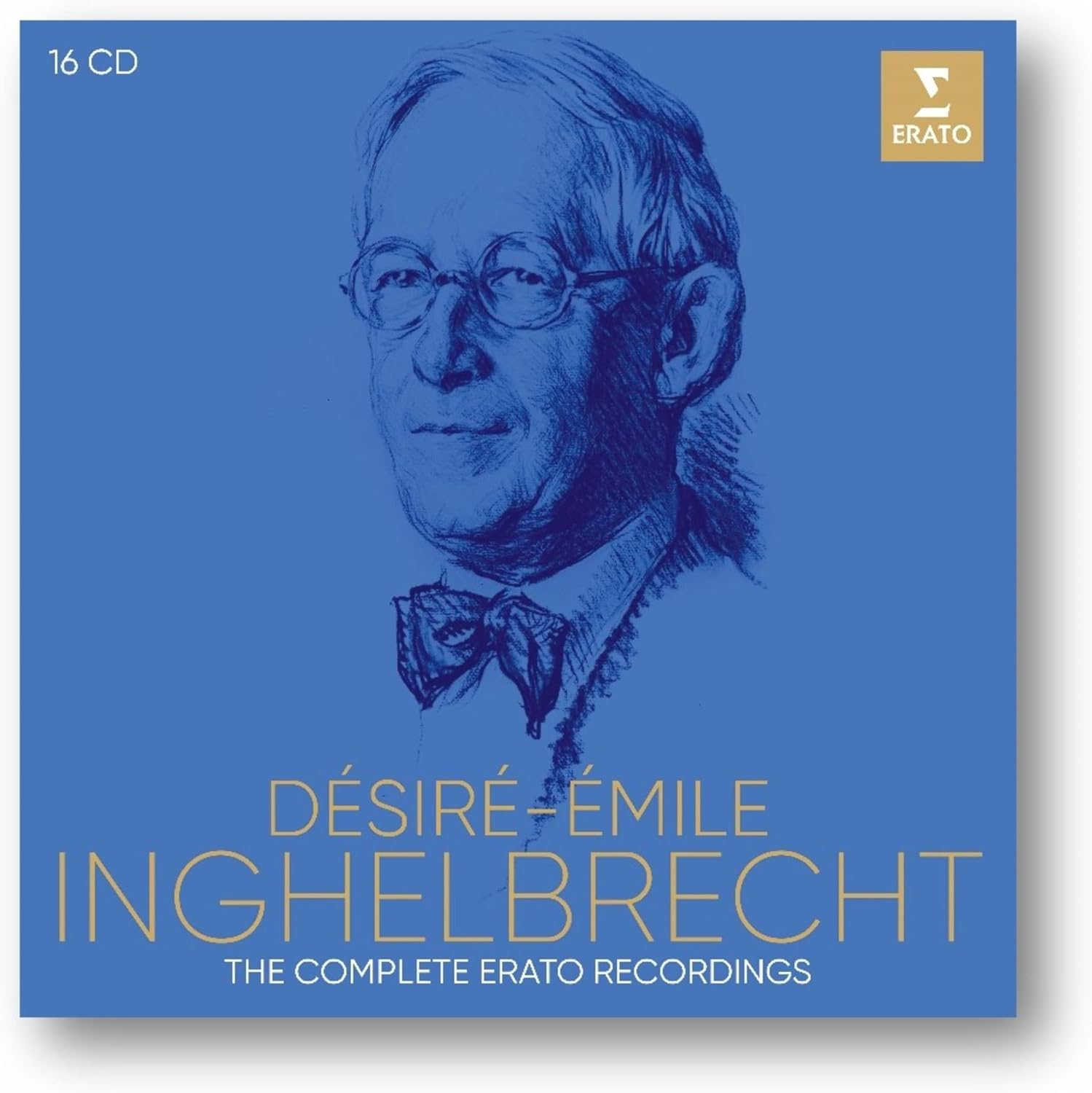 Désiré-Émile Inghelbrecht: The Complete Erato Recordings (Erato)
Désiré-Émile Inghelbrecht: The Complete Erato Recordings (Erato)
We’re fortunate that Désiré-Émile Inghelbrecht (1880-1965) actually got as far as making a career in music. The aspiring violinist and composer was expelled from the Paris Conservatoire at the age of 16 by a harmony professor, dismayed that his young student was slumming it by earning extra money playing in cafes and music halls. Undeterred, Inghelbrecht secured a second violin post in the Orchestre l'Opéra, supplementing his income through working as an orchestrator. Conductor Pierre Monteux recognised Inghelbrecht’s talents, occasionally hiring him as a substitute, and in 1913 he became music director at the Théâtre des Champs-Élysées. Inghelbrecht’s subsequent life brought him into contact with the cream of early 20th century musical Paris, his enduring friendship with Debussy particularly significant. In 1934 Inghelbrecht was given the task of founding what was to become the Orchestre national de la Radiodiffusion française, whose principal conductor he remained until 1944 when a dispute with the Vichy regime led to his dismissal. Inghelbrecht’s postwar career was busy, however, the last performance contained in this 16-disc set a live recording of Debussy’s Images and Jeux from 1962, made when he was 82.
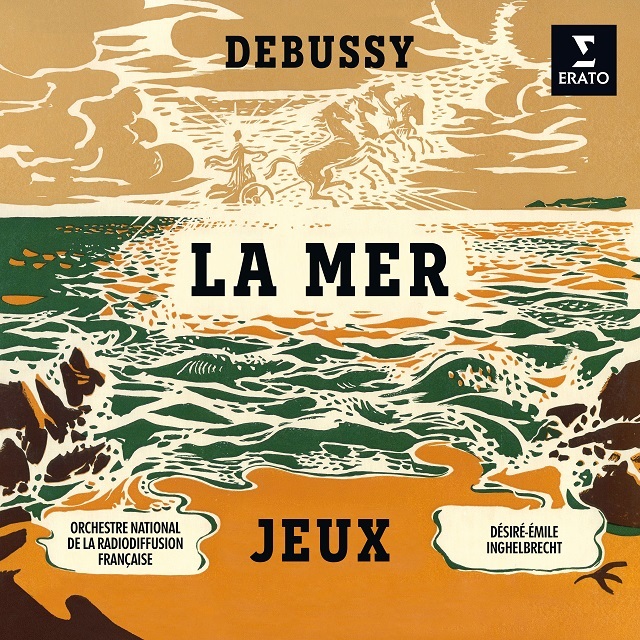 While it’s interesting to hear contemporary conductors’ attempts to give historically informed readings of 20th century music, this box contains the real thing, ie. performances in decent sound by a musician who was actually there, and one with a personal connection to some of the composers. Five of the discs contain well-transferred 78rpm recordings, all worth sampling (try Inghelbrecht’s zippy, very Gallic take on Strauss’s Till Eulenspiegel from 1930), though the remastered sound on the postwar mono LPs is far superior. Inghelbrecht’s 1953 account of Ravel’s Daphnis et Chloé, made with Théâtre des Champs-Élysées forces, is a keeper. Part 3’s “Lever du jour” is spectacular despite the murky engineering and the closing bacchanale is taken at a real lick. Another disc contains a lovely 1955 account of Ma mère l'Oye featuring piquant Parisian winds and a tangible sense of enchantment. The same CD also contains the conductor’s own La Nursery, orchestrated versions of short four-hand piano pieces. “Une poule sur un mur” is a delight, as is “Am-Stram-Gram”, based on the French equivalent of “Ip dip sky blue”.
While it’s interesting to hear contemporary conductors’ attempts to give historically informed readings of 20th century music, this box contains the real thing, ie. performances in decent sound by a musician who was actually there, and one with a personal connection to some of the composers. Five of the discs contain well-transferred 78rpm recordings, all worth sampling (try Inghelbrecht’s zippy, very Gallic take on Strauss’s Till Eulenspiegel from 1930), though the remastered sound on the postwar mono LPs is far superior. Inghelbrecht’s 1953 account of Ravel’s Daphnis et Chloé, made with Théâtre des Champs-Élysées forces, is a keeper. Part 3’s “Lever du jour” is spectacular despite the murky engineering and the closing bacchanale is taken at a real lick. Another disc contains a lovely 1955 account of Ma mère l'Oye featuring piquant Parisian winds and a tangible sense of enchantment. The same CD also contains the conductor’s own La Nursery, orchestrated versions of short four-hand piano pieces. “Une poule sur un mur” is a delight, as is “Am-Stram-Gram”, based on the French equivalent of “Ip dip sky blue”.
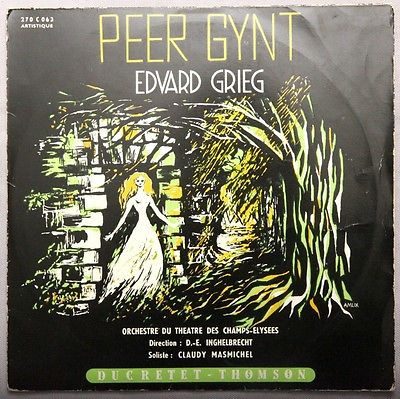 There’s plenty of Debussy, Inghelbrecht’s account of the Nocturnes worth sampling for an exuberant “Fêtes” and some unusually extrovert choral singing in “Sirènes”. Inghelbrecht’s La Mer is exciting, as is “Le matin d’un jour de fête” from Iberia. There’s a fascinating complete recording of Le martyre de Saint Sébastien featuring pungent winds and wobbly choral singing. Better disciplined is a 1955 LP of the Fauré Requiem, paired with suites from Shylock and Pelléas et Mélisande, and there are some idiomatic readings of music by Berlioz, Bizet, Delibes, Gounod and Lalo
There’s plenty of Debussy, Inghelbrecht’s account of the Nocturnes worth sampling for an exuberant “Fêtes” and some unusually extrovert choral singing in “Sirènes”. Inghelbrecht’s La Mer is exciting, as is “Le matin d’un jour de fête” from Iberia. There’s a fascinating complete recording of Le martyre de Saint Sébastien featuring pungent winds and wobbly choral singing. Better disciplined is a 1955 LP of the Fauré Requiem, paired with suites from Shylock and Pelléas et Mélisande, and there are some idiomatic readings of music by Berlioz, Bizet, Delibes, Gounod and Lalo
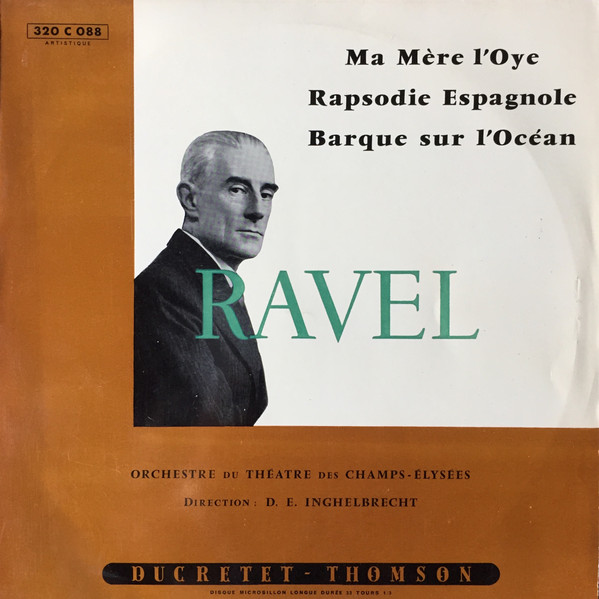 Lively, colourful 1954 performances of Grieg’s two Peer Gynt suites aside, the non-French repertoire is found on the pre-war discs. Lyadov’s delightful Russian Folksongs was new to me, and the prelude to Wagner’s Tristan has plenty of oomph. A disc containing 1930s recordings of Inghelbrecht’s own works is enjoyable, the Quatre Fanfares including a sombre “Funèbre” in memory of workers killed in a mining accident. And there’s a real rarity in the shape of Fête des Colonies by Elsa Barraine, an enchanting, brilliantly scored nine-movement suite, the subject matter making it unlikely to be revived any time soon. An attractive set, Erato retaining the original LP sleeve art, François Laurent’s booklet essay providing a detailed overview of Inghelbrecht’s busy life and career.
Lively, colourful 1954 performances of Grieg’s two Peer Gynt suites aside, the non-French repertoire is found on the pre-war discs. Lyadov’s delightful Russian Folksongs was new to me, and the prelude to Wagner’s Tristan has plenty of oomph. A disc containing 1930s recordings of Inghelbrecht’s own works is enjoyable, the Quatre Fanfares including a sombre “Funèbre” in memory of workers killed in a mining accident. And there’s a real rarity in the shape of Fête des Colonies by Elsa Barraine, an enchanting, brilliantly scored nine-movement suite, the subject matter making it unlikely to be revived any time soon. An attractive set, Erato retaining the original LP sleeve art, François Laurent’s booklet essay providing a detailed overview of Inghelbrecht’s busy life and career.
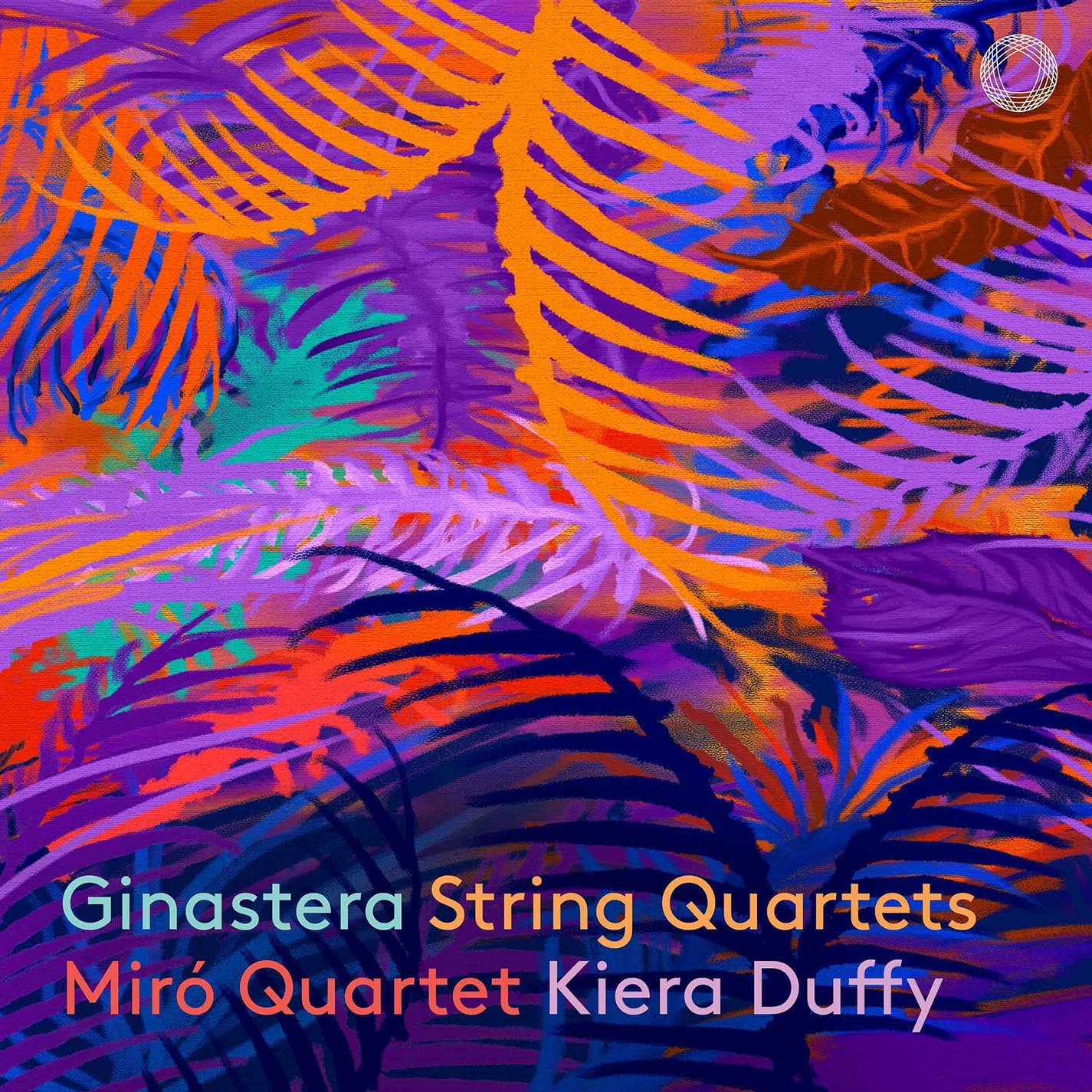 Ginastera: String Quartets Miró Quartet, Kiera Duffy (soprano) (Pentatone)
Ginastera: String Quartets Miró Quartet, Kiera Duffy (soprano) (Pentatone)
Infrequent exposure to the music of Argentinian composer Alberto Ginastera usually leaves me curious to hear more. That particular project is still a work in progress, memorable discoveries including his Copland-influenced ballet Estancia, a superb Harp Concerto and finding out that Astor Piazzolla was one of his pupils. Here’s a disc containing the three string quartets, works which span his career and which neatly encapsulate his development as a composer. Ginastera divided his creative career into three distinct chunks. The first, Objective Nationalism, takes in the years between 1934 and 1948, a period where Argentinian folk and dance elements were reflected through an occasionally dissonant but accessible style, close to the music of Copland’s mature ballet scores. The compact String Quartet No. 1 dates from 1948 and is an ideal starting point for Ginastera initiates, a perfect blend of pungent folksiness and 20th century modernism which will enthral anyone who’s fond of Bartok’s mature quartets. Austin’s Miró Quartet dazzle in the faster movements and nail the anguished lyricism of the “Calmo e poetico”. Quartet No. 2 dates from 1958, the close of what the Subjective Nationalism years. The folk melodies and indigenous rhythms have gone, though the composer acknowledged that listeners would find “constant Argentinian elements… magic, mysterious sounds reminding one of the cryptic nature of the country.” The musical language is more freely dissonant, Ginastera using 12-tone elements in a very individual way. An “Adagio angoscioso” is extraordinarily beautiful, and the fourth movement is a compact sequence of variations on a folk melody which we never actually hear. A manic finale is simultaneously exhilarating and disturbing.
Quartet No. 3 appeared in 1973, in the middle of Ginastera’s Neo-Expressionism period. Four of the five movements include a part for soprano, Ginastera setting texts by three Spanish poets. The composer’s own description of the work (quoted in the booklet) left me baffled. Best to study the texts and translations and just listen; the passage in the first movement where soprano Kiera Duffy intones the words “vial of magic purity, sonorous pleasing teardrop, beautiful black moon…” is spine tingling. Marvel at the Mirós’ performance of the second movement’s shadowy nocturne, each special effect flawlessly realised, and at the sheer sensuality of their response to Duffy’s singing of a Lorca text in the central “Amoroso”. An extraordinary work, and an extraordinary album, wonderfully performed and beautifully recorded.
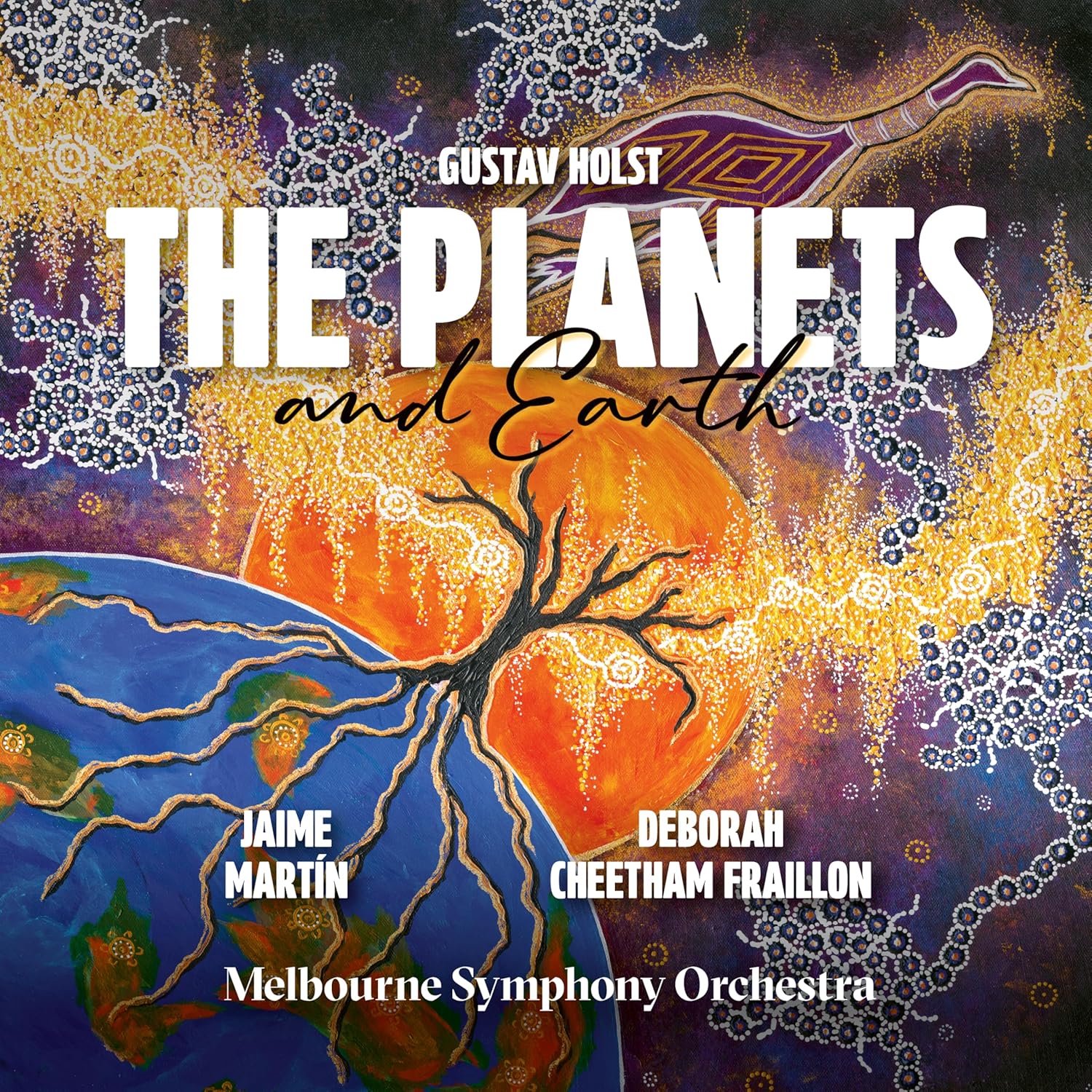 Holst: The Planets Melbourne Symphony Orchestra/Jaime Martín, with Deborah Cheetham Fraillon (soprano) (MSO)
Holst: The Planets Melbourne Symphony Orchestra/Jaime Martín, with Deborah Cheetham Fraillon (soprano) (MSO)
I last reviewed a recording of Holst’s The Planets in 2020: Michael Stern’s Kansas City Symphony version one of the most exciting modern performances I’ve heard, coupled with a zingy account of the ballet music from his opera The Perfect Fool. Here’s an excellent new one from the Melbourne Symphony Orchestra under Jaime Martín, taped in March 2024. Martín’s tempi are close to Stern’s and he’s similarly well-recorded, the balance close and full of detail. Extrovert passages, like the chattering strings at the start of “Jupiter” unfold with precision, the timpani thwacks wonderfully clear, the horns very present in the mix. The big 3/4 tune is perfectly paced, and the final seconds of the movement’s coda, Melbourne’s lower brass roaring out said theme under Holst’s frenetic chattering winds, is dazzling. We’re in safe hands. This “Uranus” is a potent blend of mischief and menace, Martín ensuring that Holst’s overlapping rhythms are cleanly delineated. “Mars” is swift and savage, “Venus" swoons and this “Saturn” has plenty of fire in its belly. Thoroughly recommendable, then, the offstage voices at the close of “Neptune” nicely caught.
The Planets is a near-perfect work. This didn’t stop Colin Matthews gamely supplying a new movement, “Pluto, the renewer” a few decades ago. It hasn’t caught on – why would anyone want to wreck the ethereal end of Holst’s “Neptune”? This album’s bonus attraction is Earth by Deborah Cheetham Fraillon, a standalone work originally conceived as another add-on. Given the current parlous state of the planet, music of savage violence and dissonance would surely fit the bill, but Cheetham Fraillon is more optimistic. Earth’s ten minutes are a celebration of the “glimmering, shining beauty of nature”, humanity represented by the composer doubling as soprano soloist in the final minutes. It’s big, lushly scored and occasionally spectacular, but curiously unmemorable. Get this disc for The Planets, in other words.
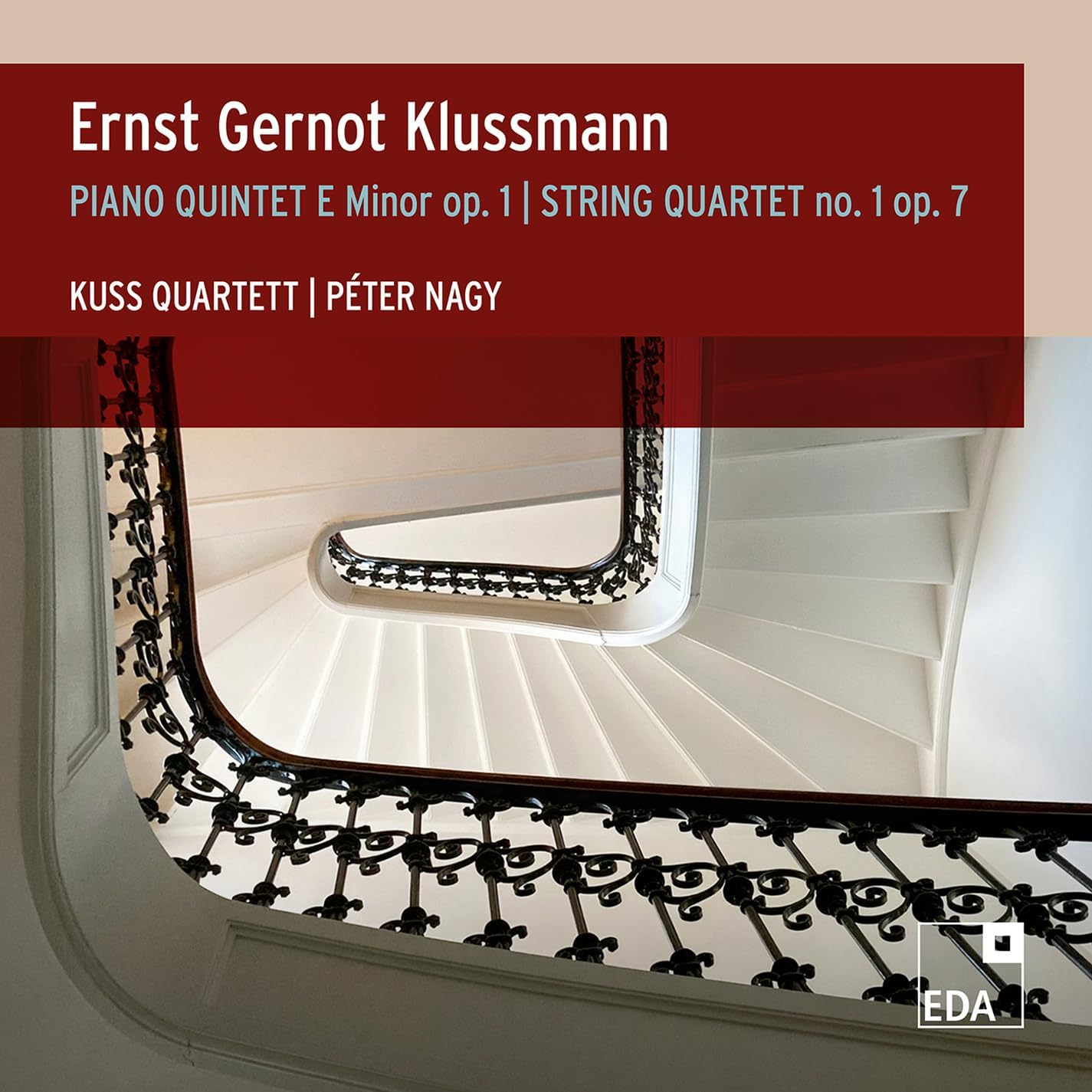 Ernst Gernot Klussmann: Piano Quintet, Op.1, String Quartet No 1. Op. 7 Kuss Quartet, Péter Nagy (piano)(Eda)
Ernst Gernot Klussmann: Piano Quintet, Op.1, String Quartet No 1. Op. 7 Kuss Quartet, Péter Nagy (piano)(Eda)
German civic pride can be such a powerful positive force. This release has ten pages of essays in impassioned German by three writers, all of whom have the musical heritage of Hamburg in their bones (the translations into English are rather dry and have occasional fluffs). The three proudly tell the story and extol the virtues of Ernst Gernot Klussmann (1901-1975) “one of the outstanding personalities in the musical life of Hamburg from the late 1930s until his death in 1975.”
In his early life Klussmann’s musical ambition had been to extend the legacy of Mahler’s expressive language and apply strict principles of contrapuntal voice-leading (mis-translated in the brochure) to it. At that time, and in that place, such strongly held musical imperatives made him particularly vulnerable. In the early 1930s, Cologne’s musical institutions, where he had his first teaching posts, were all too rapidly becoming Nazified. Klussmann, an anxious, rule-following character was an easy target. It was later, and in Hamburg, after successfully appealing against a verdict that he had been a “Mitläufer” or follower/sympathiser during the Nazi time, where he was to make his mark as a teacher, and the current release celebrates the 75th anniversary of the opening of the HfMT (Hamburg University of Music and Drama), and Klussmann’s role in that story as one of the school’s founding fathers.
Anyone seeking music to unwind to will need to look away. The spring stays tightly coiled here, harmonic tension stays unabated. The Berlin-based Kuss Quartet play these works with the extrovert urgency which has become something of a trademark for them. The more I listened to the First String Quartet, from 1928-30, the more I wondered if Klussmann had heard or read through Frank Bridge’s deeply impassioned and serious yet very constructed Quartet No.3 from 1925-7. We are in a very similar expressive world.
Klussmann was a pianist, and the Piano Quintet, his Op. 1, was written in 1925 when he was spending summers as a repetiteur in Bayreuth. The first movement is marked “Allegro Impetuoso”, and maybe that impetuousness is his story in microcosm. His life went through many of the stormiest moments in his nation’s history. In the 1960s, the booklet notes, he tried briefly to align with the orthodoxy of serialism, couldn’t hack it as a fashion victim and gave it up. After retirement he went on “unperturbed” writing… symphonies… full operas… which ended up in his draw and were never performed. Klussmann’s finely wrought and serious music is what it is, and swims resolutely against the tides of fashion. At least there is something to celebrate: he has now been expertly, passionately and let’s hope definitively un-cancelled in Hamburg. Sebastian Scotney
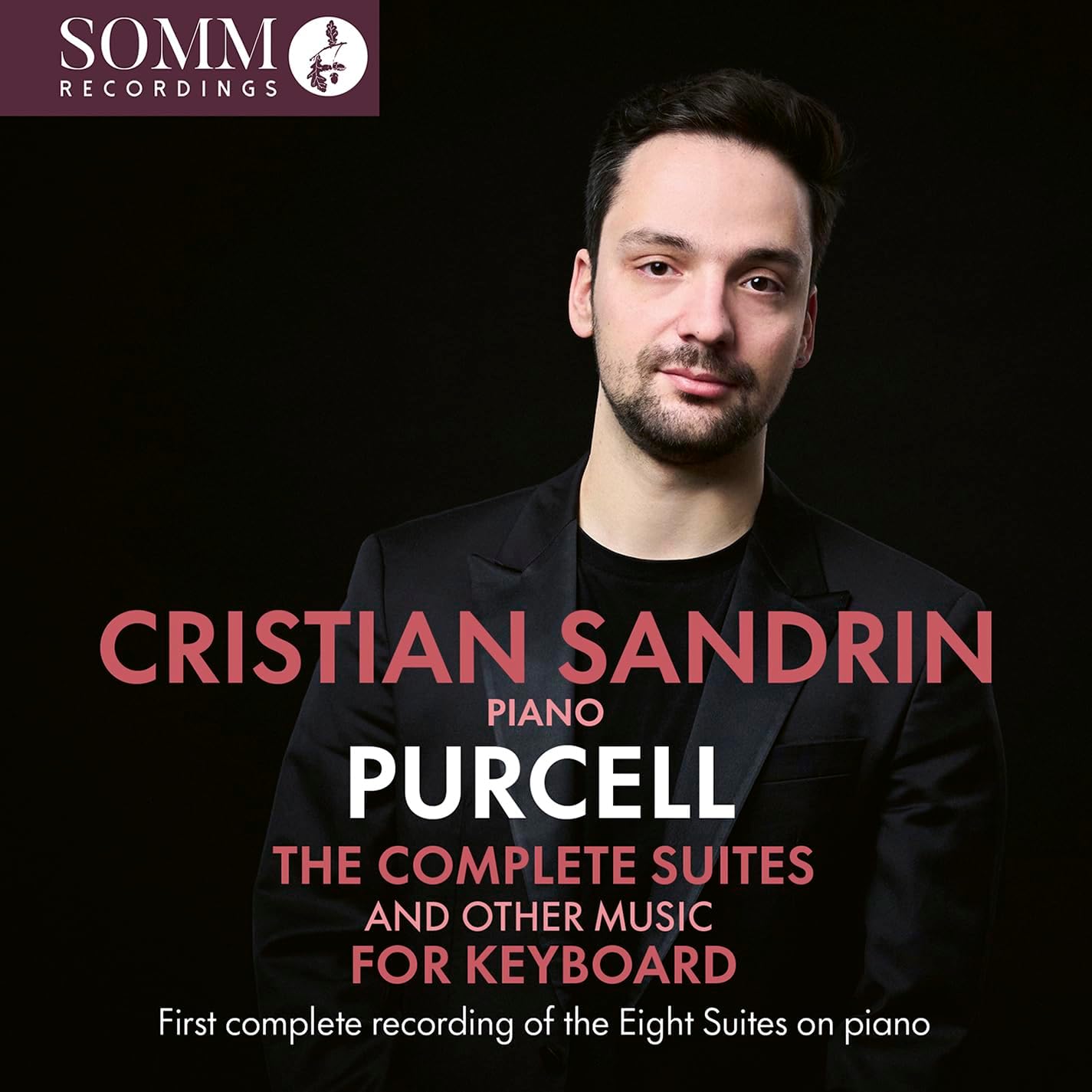 Purcell: The Complete Suites & Other Music for Keyboard Cristian Sandrin (piano) (Somm)
Purcell: The Complete Suites & Other Music for Keyboard Cristian Sandrin (piano) (Somm)
Eight suites for keyboard by Purcell were collated and published posthumously by his widow Frances as A Choice Collection of Lessons for the Harpsichord or Spinnet. You won’t find either instrument on this warmly engineered disc, pianist Cristian Sandrin acknowledging that using a Steinway will sound anachronistic but it can “magnify the details of an early music to a much greater extent than instruments of the period can.” Sandrin revels in the piano’s ability to make the melodies sing without letting the textures get too thick. The results are beguiling, the expressive range of these rarely-heard pieces a continual surprise. I’d suggest listening to Suites 2 and 3 in succession: No. 2’s “Almand” and “Saraband” are studies in introspection, played with real delicacy, while the G major 3rd Suite is bright, brassy and extrovert.
I kept returning to the minor key numbers: Suite No. 4’s tiny “Saraband” is heart wrenching, and No. 7’s opening “Almand” is magnificently imposing. Sandrin writes in his introduction of being bewitched by Purcell’s “lavish dissonances and meandering harmonies”, and we can hear and feel exactly what he means. Interspersed among the individual movements are eight Purcell numbers taken from The Second Part of Musick’s Hand-Maid, an anthology of keyboard pieces published by Henry Playford in 1689. Sandrin has matched each interloper with the suites’ respective key signatures, so you can listen blind and try to identify when they appear. The quirky, lopsided “Jigg” tacked onto the 5th Suite is an earworm, and the “New Irish Tune” that pops up in Suite No. 3 will please fans of the BBC World Service. A gorgeous album – why don’t more pianists tackle this repertoire?



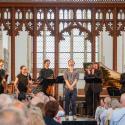


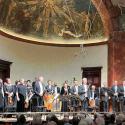
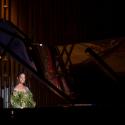

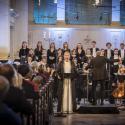



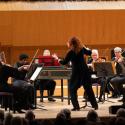
Add comment